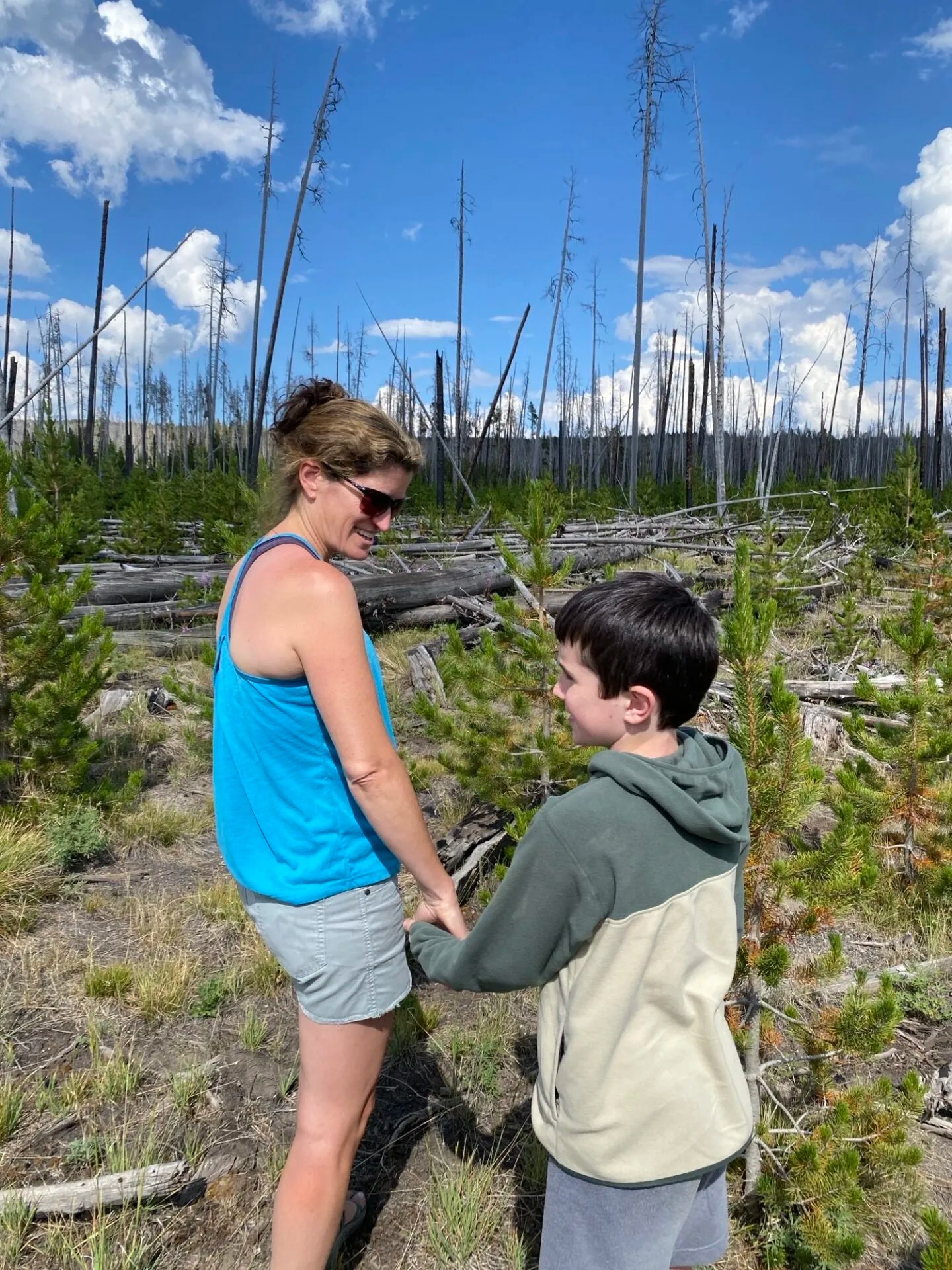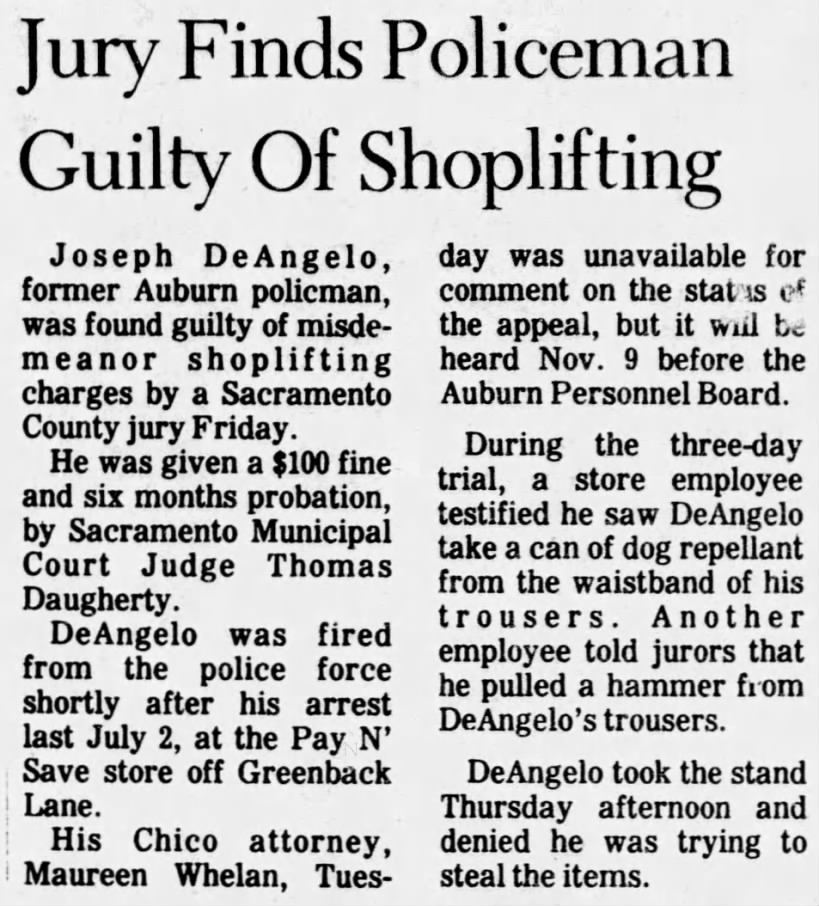This story is published in partnership with the Investigative Reporting Workshop at American University.
In Minnesota, two tenants, the parents of a young autistic son, were told that they would be evicted. The reason? One neighbor had repeatedly complained about noise stemming from the child’s behavior, though it was nothing constant nor pervasive, according to Courtney Arthur, the program manager for Mid-Minnesota Legal Aid’s Housing Discrimination Law Project. But the landlord, who decided that this was reason to evict them, was constrained because this potentially could constitute a violation of the Americans with Disabilities Act.
“They’re not really disturbing anyone, but they’re being discriminated against,” Arthur noted. She then explained that “99.9 percent of the time,” her organization was able to intervene in similar situations, with families who have disabled relatives. When they do, she said, “Those people are allowed to stay in their home and not be treated differently.”
That’s what happened in Minnesota. The mother called Arthur’s team. They then directly wrote to the landlord asking to rescind the lease termination because the basis of the “breaches of lease” was due to her son’s disability, and therefore, discriminatory. The whole process took two weeks, and in the end, the family was allowed to stay in their home. All over the country, nonprofits like Mid-Minnesota Legal Aid work to protect tenants from abusive circumstances, such as sexual harassment from landlords and property owners who refuse to lease to tenants paying with vouchers. But now, their work in fair housing enforcement is in jeopardy.
On Feb. 27, the Trump administration abruptly canceled funding grants for 78 nonprofit organizations that work to combat housing discrimination nationwide, including that of Arthur’s organization. That funding, she said, comprises all of the organization’s fair housing funds. These Fair Housing Initiatives Program grants, a program that has existed since 1987, have helped fund organizations that provide direct assistance to those who feel they have faced discrimination while attempting to purchase or rent housing, as well as organizations that focus on outreach and awareness campaigns relating to fair housing.
Will Fischer, director of housing policy at the Center on Budget and Policy Priorities, explained that more people would lose protections from a whole range of discriminatory actions—race, gender, ethnicity, age, disability—as well as options to seek any enforcement. “What this means also is that owners, people in the real estate industry, will know that there’s less enforcement,” he said, “so it will just kind of embolden bad actors to be more likely to discriminate than they would be today.”
In February, nearly half of all local fair housing enforcement agencies received notices of cancellation, totaling around $30 million in cuts, which were substantial portions of their budgets. About a month later, a temporary restraining order from Judge Richard G. Sterns of the U.S. District Court in Massachusetts reinstated those grants in response to a class-action lawsuit from the National Fair Housing Alliance, but the eventual outcome remains uncertain with potentially dire consequences for consumers.
Minnesota is just the tip of the iceberg. The Fair Housing Council of Orange County in California reapplied for their grants from HUD months ago, in advance of their grants lapsing at the end of June. David Levy, a programs specialist, said they have been met with radio silence. That money makes up around 60 percent of their funding, and without it, they will have to lay off nearly half of their 10-person staff and reduce their programs significantly. Others, including Arthur, expressed similar concerns about grants not being renewed once they end.
“We’re not going to have the resources to be as assistive in filing complaints as we’ve been able to be in the past,” Levy said. “We’re worried that people will be less informed, and perhaps not even in an intentional way. There will be some discriminatory behavior that creeps in.”
As the massive assault on the federal government by the Trump administration unfolds, the damage to federal agencies—from the Department of State to the Department of Health and Human Services to FEMA—has been almost too much to calculate. Foreign aid, public health efforts, the Internal Revenue Service, national parks, research grants to colleges and universities, and countless other programs have been eviscerated—at least 51,000 federal employees have been laid off or are targeted for layoffs, according to a CNN analysis. A Supreme Court decision from early July cleared the way for the Trump administration to go ahead with mass layoffs across agencies, including HUD. Within this chaotic landscape are also dramatic cuts to housing programs funded by the Department of Housing and Urban Development. HUD programs impact millions of Americans—there are over 788,000 public housing units and over 2.3 million housing vouchers leased across the country, according to data from agency dashboards.
“We are witnessing an assault on fair housing and fair lending by this administration as the nation is in the throes of a fair and affordable housing crisis,” said Nikitra Bailey, executive vice president at the National Fair Housing Alliance. She warns that the changes “will open the floodgates to predatory conduct in the housing market.”
HUD was officially established as part of President Lyndon Johnson’s Great Society programs in 1965 to run all federal housing programs. It’s a $70 billion agency tasked with managing everything from public housing to assistance for the elderly, the disabled, and military veterans. Trump’s appointee to head the office, Scott Turner, a former NFL defensive back and two-term Texas state House lawmaker, promised during his confirmation hearings to uphold fair housing laws, but focused much of his testimony on the need to build more housing. Turner also served as executive director of the White House Opportunity and Revitalization Council during Trump’s first term, which focused on private investment into low-income “opportunity zones.”
Turner may have to maximize a smaller budget in the upcoming fiscal year if the Trump administration gets its way in the appropriations process. The 2026 budget request from the White House, released on May 3, might exacerbate some of those concerns as it proposes slashing nearly $33 billion to HUD, a 43.6 percent cut to the agency. The Department of Government Efficiency, or DOGE—tasked with massively downsizing the federal government—has already cut over $747 million in grants and contracts from HUD since early February, according to its own data.
The administration has also proposed cutting $26 billion and imposing a two-year limit on HUD’s State Rental Assistance Block Grant, which the AP reports would result in 1.4 million people losing rental subsidies and public housing vouchers, further exacerbating the housing crisis.
“Without these resources, affordable housing projects will slow down significantly or stop altogether,” Kim Johnson, of the National Low-Income Housing Coalition, wrote. “Millions of people who rely on rental assistance to pay rent every month will be at immediate risk of eviction, and, in worst cases, homelessness…For landlords and owners/operators of HUD-assisted affordable housing, even the uncertainty of continued funding acts as a disincentive to participate in HUD programs.”
“There are a lot of different directions that this could go in, but they’re all bad and all harmful for people who are struggling to afford housing.”
The proposal would turn these programs into block grants, shifting the burden to states for making significant cuts to housing assistance programs. Rent vouchers could be taken away from people who rely on them, assistance for owners of subsidized housing could be ended, and funding for maintenance and repairs to public housing would all be cut, according to Fischer. Eventually, this would lead to evictions and potentially homelessness for many vulnerable individuals, and housing units could fall into disrepair without proper upkeep, thereby further exacerbating the housing crisis for low and moderate-income people.
“There are a lot of different directions that this could go in,” he added, “but they’re all bad and all harmful for people who are struggling to afford housing.”
Shifting to a block grant, Eric Oberdorfer, director of policy and legislative affairs at the National Association of Housing and Redevelopment Officials, said, presents a different constellation of problems by cutting the funding connection among three crucial groups: public housing authorities, residents, and landlords. This “not only undermines service delivery but also makes these programs more susceptible to future cuts,” he wrote in an email. “Without a clear, visible link between funding and the families being served, it’s far easier to reduce or eliminate resources, ultimately helping fewer families over time.”
Finally, this budget would “institute a two-year cap on rental assistance for able-bodied adults, and would ensure a majority of rental assistance funding through States would go to the elderly and disabled.” But even if funded at its current levels, finances for the voucher program are already not meeting the need that exists. “Right now, about one-fourth of all families are actually eligible to receive assistance through the voucher program,” Oberdorfer said. “And so any underfunding of that has the potential to make it more difficult to serve families.”
And that two-year limit, Fischer said, raises a problem for the many Americans who cannot afford market rents.
“You can be in a low-wage job for an extended period and still need help to afford housing,” he said. “Establishing these arbitrary time limits would mean that for a lot of folks, they would see their assistance suddenly come off at the end of this two-year time period, but they would still need help to afford housing.”
The White House justifies its budget request that eliminates $60 million from the Fair Housing Initiatives program by arguing it is being used to fund nonprofits that “advocate against single-family neighborhoods and promote radical equity policies inconsistent with the Administration’s efforts to eradicate DEI programs.” Gutting the program also aligns with Project 2025 proposals, which claim that fair housing implementation “is muddled by the repeated application of affirmative race-based policies” and advocates for moving many HUD functions to state or local governments.
In the past, fair housing policies have seen support from both sides of the aisle. The federal Fair Housing Act, which first established these systems, was passed in 1968 with broad bipartisan support, and the 1988 expansion of the act under Ronald Reagan similarly passed across party lines. But since 2016, the issue has seen more partisan division, with Republicans seeking to roll back federal involvement in housing policy, including in fair housing.
The impact of rolling back fair housing laws, however, can be seen in both red and blue states. In fiscal year 2023, 34,150 cases of housing discrimination were filed, according to a report from the National Fair Housing Alliance, with California and Ohio claiming the most cases. Over half of all cases nationally stemmed from concerns about discrimination due to disability.

“I think the reality is that we’re dealing with these changes while the country is in the throes of a fair and affordable housing crisis, where people really voted for action,” Bailey said. “People want to see increased federal intervention to address soaring housing costs in a shrinking supply of fair and affordable housing, so they want to see increased federal support, not a retreat from basic civil rights.”
Grantees report that announcements regarding their future have been chaotic and sometimes unreliable. They’ve received notices about cuts to their programs, often at odd hours, with no warning. Policy changes are often released via notices on various websites or even on social media, Bailey said. One agency in the Mountain West region of the country received its notice of funding cancellation at almost 8 p.m. local time—the next day, they began telling staff it was likely they should look for other jobs.
On the same day in February, dozens of nonprofit housing organizations received a boilerplate memo announcing that HUD was issuing the notice of termination at the direction of DOGE: “HUD is terminating this award because it no longer effectuates the program goals or agency priorities.”
Immediately, organizations started planning on how to cut costs. For some, such as Levy’s team in Orange County, this meant potentially laying off a portion of the staff. For others, such as Project Sentinel in California’s Bay Area, this meant that unless they could find another significant source of funding, they would have to significantly cut down on the scope of their work.
“We will be operating on fumes in terms of a budget, unless we’re able to find external sources of funding,” said one housing nonprofit employee who asked not to be named out of concern for retribution against his agency. Even “fumes” however, would be short-lived, and then there would be inevitable layoffs, before closing down the organization. “We would not have any source of income to provide the resources needed,” the employee said.
And even if those canceled grants were restored by a court order, it is still unlikely organizations would be able to receive what is owed to them from their current grants without delays or gaps, much less anticipate that they will be renewed for the long term. Carole Conn, the executive director of Project Sentinel in Santa Clara, California, said that their organization had been told that between the initial funding cancellation and the judge’s order to restore funding, they would not be paid for any expenses incurred during that time—which added up to nearly a month of rent, salaries, and benefits.
“We’ve received this grant for decades,” said Arthur, from Mid-Minnesota Legal Aid. “We’ve never had an issue.”
In late June, the National Fair Housing Alliance and the Tennessee Fair Housing Council filed a lawsuit against HUD in the United States District Court for the District of Columbia, alleging that the administration’s “refusal to administer critical grant funding under the Fair Housing Initiatives Program” breaks the law by refusing to allocate congressionally-appropriated funds.
The lawsuit specifically accuses HUD of not initiating the second year of grants that allow nonprofits to independently investigate potential fair housing violations and conduct testing of landlord compliance. It also cites HUD’s failure thus far to issue a Notice of Funding Opportunities that would have allowed the dispersal of fair housing funds already approved by Congress in the FY25 budget.
“We, as an organization, have been told by HUD, the regional staff, that everything is on pause. HUD staff cannot negotiate any contracted funding,” said a member of one agency’s leadership team, who asked not to be identified for fear of retaliation from the administration in future funding opportunities.
“We’ve all kind of dedicated our lives to this work, and it was a little bit of a slap in the face,” Arthur of the Mid-Minnesota Legal Aid program said.
HUD declined to comment on the ongoing litigation.
Bailey from the National Fair Housing Alliance added, “It’s been very fear-driven the way that information has been delivered, and it’s very dysfunctional.” She described the degree of “chaos” front-line organizations faced in “trying to serve victims of housing discrimination.” But the real victims, she noted, were the people who need services. “They’re not getting notice that the places that they could potentially go to address cases of housing discrimination are being impacted.”
For potential clients experiencing discrimination, the cuts have had immediate effects. Bailey noted that changes to the intake procedure for those filing housing discrimination complaints have only added to the confusion and dysfunction. Historically, she said, there have been multiple ways to file a complaint—via phone, an online form, or a physical, mailed form, with the ability to contact a regional office with the issue at hand.
But an April letter from the National Fair Housing Alliance to HUD Secretary Turner argued that many of these mechanisms no longer work. Complaints by phone are now all routed through a national 1-800 number. However, calling that line leads to a message saying that the caller has reached the “reasonable accommodation line,” and specifies that the number will only return messages that are solely requesting accommodations in the online complaint filing process—the line cannot be used to file a complaint directly over the phone.
The online form, which is currently available in English and eight other languages, has been riddled with issues since mid-March. And 404 error messages, frozen website pages, and limits on the number of characters in the description section of the form made it difficult, if not impossible, to submit forms or receive any response, the letter alleges. Regional offices have historically acted as liaisons to local fair housing nonprofits and previously fielded many of these complaints. But they also report that their phone contacts for those seeking to report fair housing complaints have been discontinued.
Levy recalls that in the past, they would have assisted clients they believed had legitimate complaints. “We had a means of getting that complaint submitted through an email process to our regional office,” Levy said. “That has all now been shut down.”
For those filing reports—even with the help of a fair housing organization—the mechanisms already presented significant delays. But changes under the Trump administration are expected to make that timeline even longer by forcing all of the requests to be processed by one national office. Even in the past, there were backlogs, with regulations that required decisions on cases to be reached within 100 days of the complaint being received.
“They haven’t been able to meet that for years,” Levy pointed out. “With reduced staffing that’s now coming into place, that problem is not going to get any better, even if people are able to apply.”
The downstream effects of these backlogs and funding cuts do benefit unscrupulous landlords. Will Fischer, director of housing policy at the Center on Budget and Policy Priorities, said that funding cuts to fair housing programs don’t just make it harder to report discrimination—they may encourage more bad behavior among building owners.
“What this means also is that people in the real estate industry will know that there’s less enforcement, so it will just kind of embolden bad actors to be more likely to discriminate.”
Arthur emphasized that changes in policy and funding will not mean that housing discrimination will disappear in communities. “It’s very real, and it affects people’s lives and their happiness in their homes,” she said. “We get dozens of calls a week. This work is important, and these things are still happening to people, and it’s still very real.”
Changes to public housing systems that have been implemented so far are “lots of smoke, but very little fire,” one housing advocate said. Indeed, a HUD spokesperson insists that, thus far, none of the regional FHEO offices have been shut down completely.
Technically, that may be correct, but HUD regional offices, including the one in Orange County, have lost several key staff, including the office director and at least one grant representative, according to Levy. “Those people were always readily available to us if we had questions about what was going on with the case,” he added. “We’re fearful the complaints will disappear in the HUD, not to be heard of again for or just closed without any real interaction, there will just come a case closure letter.”
Region 5, which covers much of the Upper Midwest, is still functioning as normal, Arthur said, but she noted that delays have increased due to layoffs.
“There is increasing fear and uncertainty among residents as the administration moves to slash staffing at HUD and threatens to cut funding for vital affordable housing and homelessness assistance programs,” Johnson wrote in an email.
Some concerns among advocates were short-lived and have already been resolved, including a four-day funding freeze earlier in the year that was rescinded quickly. But this back-and-forth also foreshadowed how many of the worst fears of housing advocates might play out.
“We’re not worried at this point about it, but just in light of the funding freeze that happened in January, we do want to be mindful,” said Oberdorfer. He added that thus far, funding cuts have not impacted the affordable housing work that his members—administrators for public housing and voucher-based housing programs around the country—are managing.
But the issue of homelessness and housing insecurity remains—a December 2024 HUD report shows that over 770,000 Americans experienced homelessness in 2024, a rise of nearly 200,000 people in just the last two years. And the Census Bureau estimated that in 2023, nearly half of all renting families were cost-burdened, meaning that over 30 percent of their income is spent on housing. Rents, on average, increased by almost 4 percent in 2023, the largest annual increase since at least 2011.
Congress has thus far largely matched Trump’s budget request, with the House Appropriations Committee allocating just under $29 million for fair housing programs and around $36 billion—a 40 percent reduction in funding—for rental assistance programs in its bill draft passed on July 17, which the Senate Appropriations Committee will debate later this month.
The proposed budget would completely eliminate the Fair Housing Initiatives Program (FHIP), the program whose grants were cut in late February and that funds over 100 organizations nationwide that assist those filing housing-discrimination claims, including doing initial inspections themselves. The budget request also seeks to end any funding to translate HUD materials into other languages. And while the budget request promises to keep the Fair Housing Assistance Program, or FHAP, which funds state and local fair housing agencies, it cuts all funding for the National Fair Housing Training Academy, which trains the program’s staff.
HUD has also faced layoffs since Trump took office. The Washington Postreported in late February that the agency’s workforce was expected to drop by over half, including significant cuts to field offices nationwide, according to an internal memo their reporters obtained. NPR has reported similar numbers, also noting that some departments within HUD could face cuts of up to 75 percent of their staff. And in March, the union representing HUD employees filed a national grievance against “mass termination of bargaining unit employees” under a Reduction in Force. However, a HUD spokesperson denied that any staff have been cut, writing that “staff have opted to leave through acceptance of the DRP offers, among other optional routes.”
“Without staff to administer these programs and provide technical assistance, communities will not receive the funding and assistance needed to carry out projects and programs,” Johnson said.
These institutional changes within HUD are also reflected on the agency’s website, which was revamped at the end of March. Several links have been taken offline, redirecting to the department’s home page rather than to crucial information about programs. Though the material that public housing authorities might use to implement those programs is missing, a HUD spokesperson said, “There is no correlation between hyperlinks and a program’s implementation.”
On the Public Housing Programs page—the division that manages the nation’s public and voucher-based housing—only three of 10 links are active, and dead links include those to programs such as “Moving To Work” and “Demolition/Disposition,” which are designed to upgrade public housing properties. Some sites, however, that were previously down recently have been reinstated. The “Two-Year Tool,” for example, which allows public housing authorities to estimate their funding and the number of families served for the next two years, came back online on April 15.
Throughout all of this upheaval, advocates hope that they can continue to rely on the fact that much of fair housing has long been enshrined in the law, and the Trump administration must follow through on upholding it.
“Fair housing is the national policy of the United States, and HUD’s obligation and the federal obligation is to comply with the Fair Housing Act. It has to do that,” Bailey said. “It’s not dependent on who’s in office. That’s a federal responsibility.”
HUD Secretary Scott Turner committed in his confirmation hearings to upholding fair housing laws, but he will have far fewer financial resources to do so if Trump gets his way in the budget process.
“It’s hard to know how this is going to turn out. There’s been a long history in Congress of bipartisan support for many of the programs where the administration is proposing these devastating cuts,” Fischer said in April. “So, hopefully, Congress will recognize how harmful these cuts would be and provide funding levels that prevent them. But it’s a long process, and we’ll have to see how that plays out.”
From Mother Jones via this RSS feed
 Erica Smithwick explores a burned area of Yellowstone National Park with her son.Courtesy of Erica Smithwick
Erica Smithwick explores a burned area of Yellowstone National Park with her son.Courtesy of Erica Smithwick
 Harvey Schein in his office at Sony America in 1977Schein Family Archives
Harvey Schein in his office at Sony America in 1977Schein Family Archives Harvey and Justin Schein in 1972.Schein Family Archies
Harvey and Justin Schein in 1972.Schein Family Archies Harvey, post-retirement, and Joy. Sanibel, Florida, 1994Schein Family Archives
Harvey, post-retirement, and Joy. Sanibel, Florida, 1994Schein Family Archives Muhammad Zakariya Ayyoub al-Matouq dropped from 9 to 6 kilograms and struggles to survive in a tent in Gaza City, where milk, food, and other basic necessities are lacking.Omar Ashtawy/APA/ZUMA
Muhammad Zakariya Ayyoub al-Matouq dropped from 9 to 6 kilograms and struggles to survive in a tent in Gaza City, where milk, food, and other basic necessities are lacking.Omar Ashtawy/APA/ZUMA Injured people and bodies were brought to Al-Shifa Hospital in Gaza City after Israeli forces opened fire on civilians who were waiting for humanitarian aid in north Gaza on Sunday.Omar Ashtawy/APA/ZUMA
Injured people and bodies were brought to Al-Shifa Hospital in Gaza City after Israeli forces opened fire on civilians who were waiting for humanitarian aid in north Gaza on Sunday.Omar Ashtawy/APA/ZUMA Abdul Jawad Al-Ghalban, 14, died from severe malnutrition at Nasser Medical Hospital in Khan Younis. He is pictured on Tuesday.Moaz Abu Taha/APA/ZUMA
Abdul Jawad Al-Ghalban, 14, died from severe malnutrition at Nasser Medical Hospital in Khan Younis. He is pictured on Tuesday.Moaz Abu Taha/APA/ZUMA A charity organization distributes hot meals to Palestinians in Gaza City on Thursday.Omar Ashtawy/APA/ZUMA
A charity organization distributes hot meals to Palestinians in Gaza City on Thursday.Omar Ashtawy/APA/ZUMA Kara Ayers, associate director of the University of Cincinnati Center for Excellence in Developmental DisabilitiesCourtesy of Kara Ayers
Kara Ayers, associate director of the University of Cincinnati Center for Excellence in Developmental DisabilitiesCourtesy of Kara Ayers “Space law has taught me that there are lots of avenues for a special interest,” says AJ Link.Courtesy of AJ Link
“Space law has taught me that there are lots of avenues for a special interest,” says AJ Link.Courtesy of AJ Link Marisa Hamamoto’s Infinite Flow Dance company includes both disabled and non-disabled dancers.Samantha Tokita
Marisa Hamamoto’s Infinite Flow Dance company includes both disabled and non-disabled dancers.Samantha Tokita



 Susan Bowlus circa 1979Courtesy Susan Bowlus
Susan Bowlus circa 1979Courtesy Susan Bowlus Bowlus worked as a railroad engineer in the early 1980sCourtesy Susan Bowlus
Bowlus worked as a railroad engineer in the early 1980sCourtesy Susan Bowlus Joseph DeAngelo, who was dubbed the East Area Rapist, the Golden State Killer, and other nicknames, appears in a Sacramento County courtroom with public defender Diane Howard for his arraignment on multiple murder and rape-related charges in April 2018.Paul Chinn/The San Francisco Chronicle/Getty
Joseph DeAngelo, who was dubbed the East Area Rapist, the Golden State Killer, and other nicknames, appears in a Sacramento County courtroom with public defender Diane Howard for his arraignment on multiple murder and rape-related charges in April 2018.Paul Chinn/The San Francisco Chronicle/Getty DeAngelo was also identified as the Visalia Ransacker because of the crimes he committed there, including a murder, during the 1970s.Visalia Times-Delta
DeAngelo was also identified as the Visalia Ransacker because of the crimes he committed there, including a murder, during the 1970s.Visalia Times-Delta An undated photo released by the FBI shows ski masks from East Area Rapist cases.FBI/AP
An undated photo released by the FBI shows ski masks from East Area Rapist cases.FBI/AP FBI Special Agent Marcus Knutson (left) and Sacramento County Sheriff’s Deputy Paige Kneeland look for evidence at the Sacramento County Sheriff’s Office.FBI/AP
FBI Special Agent Marcus Knutson (left) and Sacramento County Sheriff’s Deputy Paige Kneeland look for evidence at the Sacramento County Sheriff’s Office.FBI/AP Carol Daly and Richard Shelby were two of the original detectives assigned to the East Area Rapist (Golden State Killer) case. On the mirror are notes taken by Russ Oase, a friend of Shelby’s and former federal officer who pursued the case on his own time.Nick Otto/Washington Post/Getty
Carol Daly and Richard Shelby were two of the original detectives assigned to the East Area Rapist (Golden State Killer) case. On the mirror are notes taken by Russ Oase, a friend of Shelby’s and former federal officer who pursued the case on his own time.Nick Otto/Washington Post/Getty An article from the Auburn Record notes DeAngelo’s shoplifting conviction.Auburn Record
An article from the Auburn Record notes DeAngelo’s shoplifting conviction.Auburn Record DeAngelo joined the Exeter Police Department in 1973, around the time 12-year-old Liz Silva was raped by a police officer.Santa Barbara County Sheriff’s Office
DeAngelo joined the Exeter Police Department in 1973, around the time 12-year-old Liz Silva was raped by a police officer.Santa Barbara County Sheriff’s Office Susan Bowlus in the Citrus Heights neighborhood where she was attacked.Sam Van Pykeren
Susan Bowlus in the Citrus Heights neighborhood where she was attacked.Sam Van Pykeren Wearing mosquito netting, Florida State Sen. Shevrin Jones, State Rep. Michele K. Rayner and Rep. Anna V. Eskamani, PhD, are denied entry along with fellow representatives into Alligator Alcatraz in Collier County, Florida.Al Diaz/Miami Herald/Tribune News Service/Getty
Wearing mosquito netting, Florida State Sen. Shevrin Jones, State Rep. Michele K. Rayner and Rep. Anna V. Eskamani, PhD, are denied entry along with fellow representatives into Alligator Alcatraz in Collier County, Florida.Al Diaz/Miami Herald/Tribune News Service/Getty US President President Donald Trump tours a migrant detention center, dubbed “Alligator Alcatraz,” located at the site of the Dade-Collier Training and Transition Airport in Ochopee, Florida on July 1, 2025. Andrew Caballero/AFP/Getty
US President President Donald Trump tours a migrant detention center, dubbed “Alligator Alcatraz,” located at the site of the Dade-Collier Training and Transition Airport in Ochopee, Florida on July 1, 2025. Andrew Caballero/AFP/Getty Chantal Jahchan; Rebecca Noble/Getty; Getty
Chantal Jahchan; Rebecca Noble/Getty; Getty